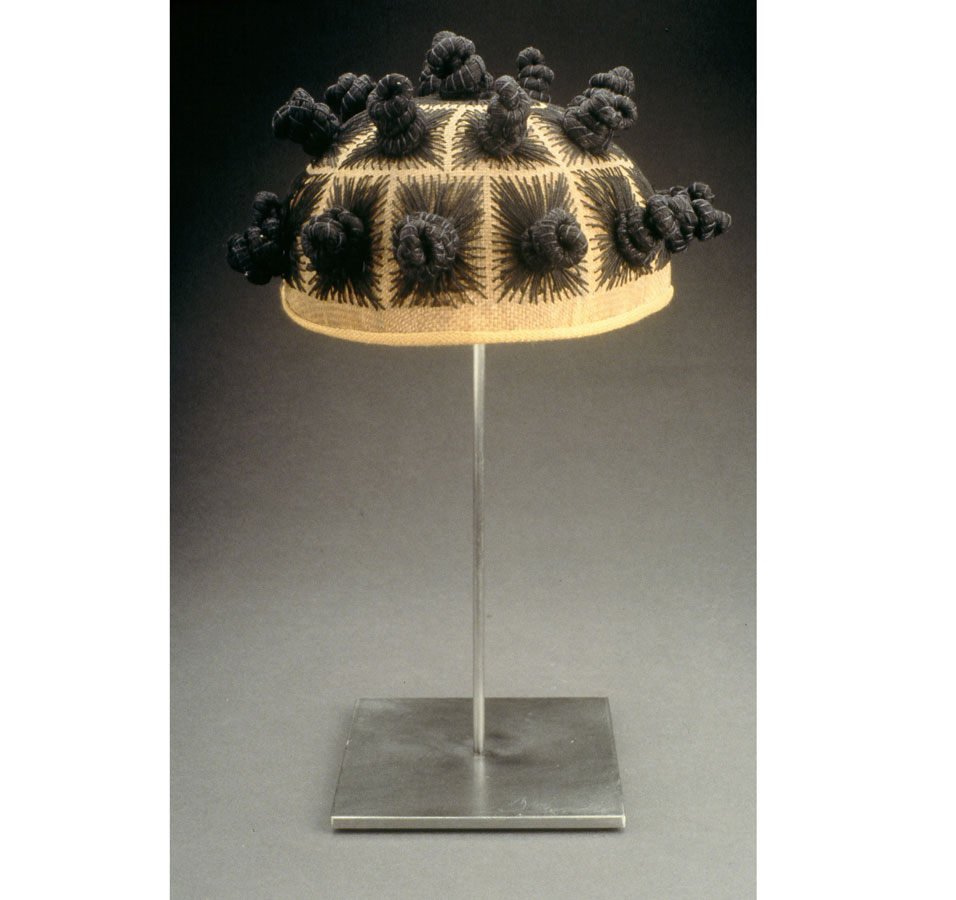 .
.Twenty-one, 1998
In the early 1990s, fiber artist Sonya Clark became fascinated with the role of the head in many belief systems as a gateway to the spirit or soul. As Bill Gaskins has noted, “Clark theorizes about the multiple implications of the head as a hallowed space, and headdressing as a channel to ancestral memory and wholeness.” Twenty-one—part of Clark’s Wig series—is one of such works that reference the atmosphere of the black beauty salon, where the artist mined many of her aesthetic devices in the late 1990s. Through tightly coiled twists of thread made to resemble Bantu knots, she aims to evoke not only the visual but the sensory condition of the salon—harsh tugs of the comb, the smells of relaxers, the slickness of pomades on the scalp. To Clark, fiber art processes can often correlate with those of head adornment and hairdressing in the African Diaspora, and works such as Twenty-one function as tributary crowns to a culture that allocates powerful symbolic and spiritual meaning to both. In this piece, she also addresses the broader symbolism of numbers, writing: “The number twenty-one has multiple meanings in American culture. If one is playing blackjack it is a lucky number, it also signifies adulthood and responsibility.”

Copyright © 2025 Cranbrook Art Museum. All rights reserved. Created by Media Genesis.